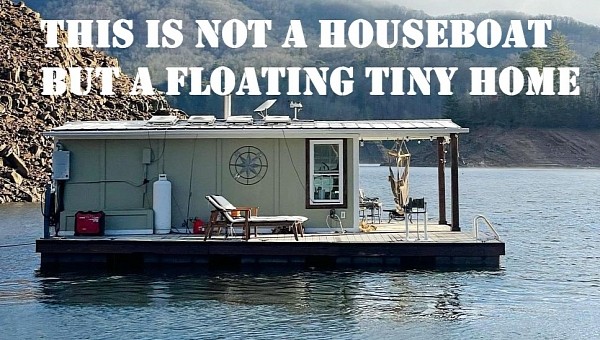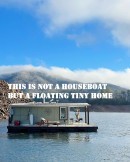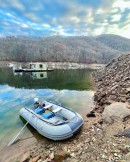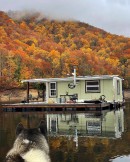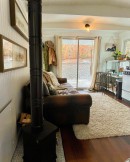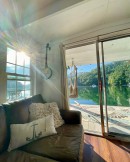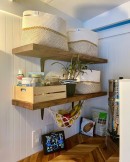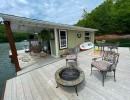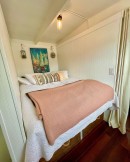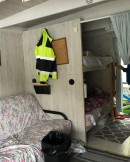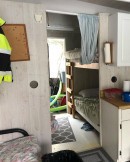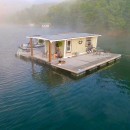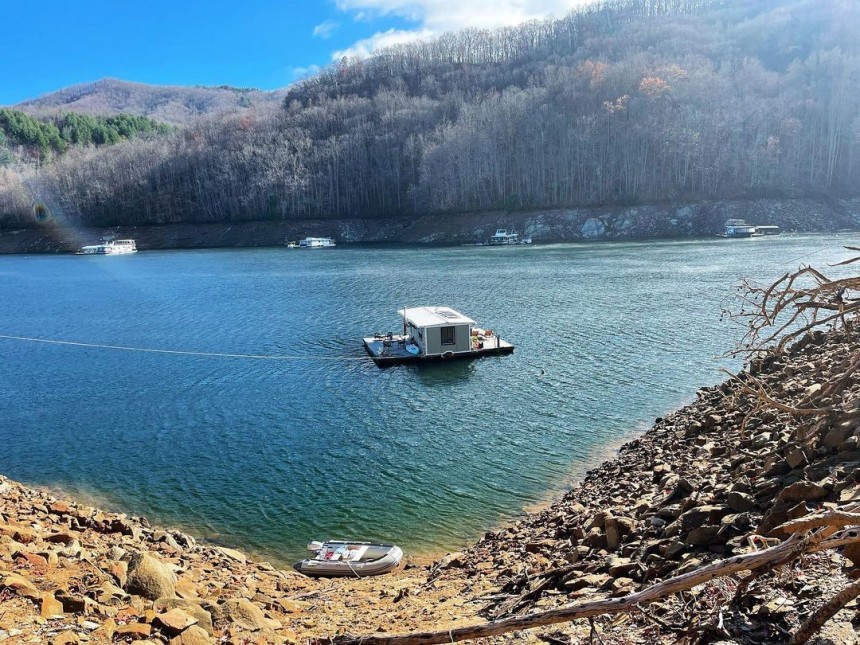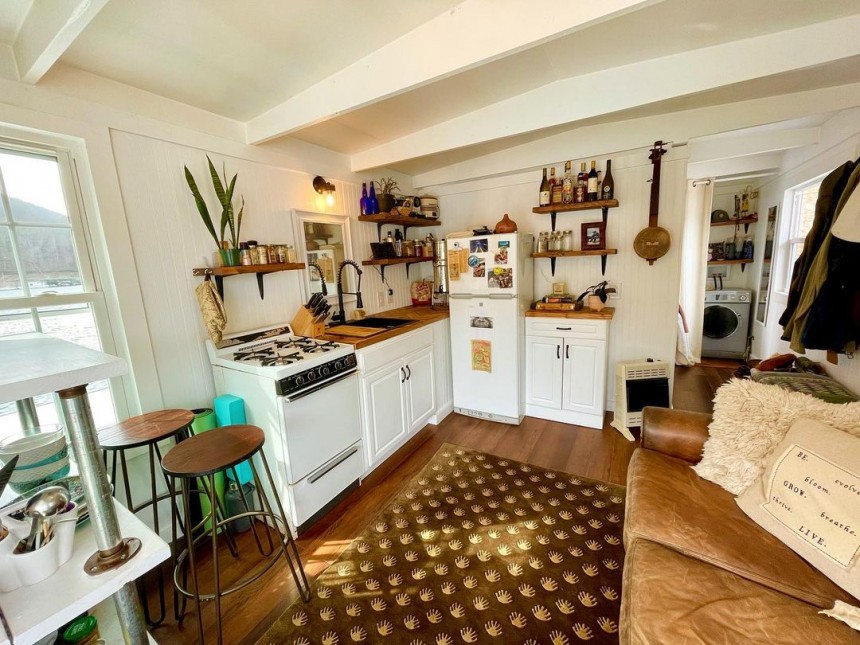With all the recent talk about downsizing, you’d be excused if you occasionally rolled your eyes at some of the tiny houses out there, given their size and features. The Surf Shack isn't eye roll-inducing.
In the most general sense, downsizing is about making the transition to a home with a smaller footprint, which, in turn, brings reduced costs of living, less clutter, and more intentional living. Downsizing is, if you will, the modern solution to a very modern ill: the stress and grinding rut of everyday life in the big city.
Even without romanticizing it, which is definitely what most highly-curated Instagram pictures will do, downsizing has incredible appeal. It holds the promise of a much simpler and easier life, one that still allows some of the more modern creature comforts while favoring a re-connection with nature. It’s like having your cake and eating it, because it also promises the almost-perfect balance between work and leisure, with minimal costs compared to standard leisure activities.
Downsizing is not easy though, and it’s definitely not for everyone. Those who are in the process of or are looking into the transition can often find support online. Brandon and Sarah are among the thousands of people who offer this kind of support, and they’re using their personal experience for it. The couple posts content on various platforms under the moniker Keeping Afloat With the Joneses, a rather-obvious spin on the old saying "keeping up with the Joneses," which then gave way to the name of the world’s most famous reality series, Keeping Up With the Kardashians.
Unlike the Kardashians, the Joneses’ lifestyle really is inspirational. Also unlike the Kardashians, it’s attainable, since it comes with a monthly cost of $373 on utilities and rent, which, in their case, means a yearly mooring fee. The Joneses’ home is a floating tiny home on Lake Fontana, on the shoreline of the Great Smoky Mountains National Park in North Carolina.
They call it the Surf Shack, though it doesn’t “surf” and it’s not technically a “shack.” It’s not a houseboat because it doesn’t have a hull or a motor, and it’s not a regular tiny house either since it doesn’t have wheels for land use. It’s a floating cabin, permanently anchored close to the shore, and also completely off-grid and very affordable.
The two bought it sight-unseen in the spring of 2021. The ad only included exterior shots of the cabin and the mention that it had been built in the ‘70s, but they knew a mooring spot in the area was hard to come by, so they jumped at the chance. To their surprise, the cabin was dilapidated, so they ended up tearing it down almost completely and building it afresh.
The original cabin, including the mooring spot, and the renovation totaled $50,000, which is still less than they would have paid for a regular house on solid ground. Brandon and Sarah repeatedly stress that they were only able to cut renovation costs by doing the work themselves, instead of contracting specialists.
Inside, in a very compact 225 square-foot (20.9 square-meter) layout, they have a lounge area and a kitchen nook, a sleeping corner, and what could be described as a proper bathroom, albeit quite generously. It’s not much, but it works wonderfully for a pair of young adults who spend most of their time outside either way, they say.
The cabin comes with a spacious deck area too, which holds a garden table with seating, a fireplace with additional seating, and tanning lounges. Tied to the cabin are their two motor boats, which they use to get to and from land, to work, to walk the dog, and to socialize.
Sarah and Brandon’s floating tiny is a beautiful example of downsizing, and because of it, it perfectly explains why downsizing has gained so much in popularity over the last decade. For instance, it relies entirely on solar for energy, thanks to a four 6V battery system with a 2,000 W inverter and the solar panels on the roof.
The kitchen stove and the on-demand hot water system run on propane, which they bring in from the marina. The fridge, which is one of the few things they’ve kept from the original cabin, can work either on solar or on propane, while the washer-drier combo in the bathroom is the only one they use a fuel generator for.
Drinking water comes from deeper within the lake, filtered by a Berkey water filter. For washing and shower water, they use a city line that goes underwater all around the shoreline, including to neighboring floating houses. Waste, including what goes down the macerating marine toilet, goes into a septic tank that is emptied weekly for as little as $5, thanks to a grant from the National Park and the local marina, where Brandon is the manager. They have Starlink for Internet, and a wood-burning stove for heat, which they mostly feed with driftwood.
At first glance, life in a floating cabin looks like heaven, and it is for Sarah and Brandon. However, they admit that it’s “hard work” almost non-stop, from regular maintenance on the floating cabin to bad weather, and having to make do with less of everything. For them, it’s a winning solution – so much so that they’re now building their second, larger floating cabin across this one, with hopes of moving in by mid-spring 2023. They will be selling the Surf Shack because they need the money to finance the larger tiny, which they will build from the ground up, and which will have a loft and extra storage options.
More importantly to wannabe tiny-dwellers, they will continue to tell their story in the hope of offering help and guidance, not just inspiration. And that’s perhaps the biggest appeal of downsizing: the incredible community it has helped build.
Even without romanticizing it, which is definitely what most highly-curated Instagram pictures will do, downsizing has incredible appeal. It holds the promise of a much simpler and easier life, one that still allows some of the more modern creature comforts while favoring a re-connection with nature. It’s like having your cake and eating it, because it also promises the almost-perfect balance between work and leisure, with minimal costs compared to standard leisure activities.
Downsizing is not easy though, and it’s definitely not for everyone. Those who are in the process of or are looking into the transition can often find support online. Brandon and Sarah are among the thousands of people who offer this kind of support, and they’re using their personal experience for it. The couple posts content on various platforms under the moniker Keeping Afloat With the Joneses, a rather-obvious spin on the old saying "keeping up with the Joneses," which then gave way to the name of the world’s most famous reality series, Keeping Up With the Kardashians.
They call it the Surf Shack, though it doesn’t “surf” and it’s not technically a “shack.” It’s not a houseboat because it doesn’t have a hull or a motor, and it’s not a regular tiny house either since it doesn’t have wheels for land use. It’s a floating cabin, permanently anchored close to the shore, and also completely off-grid and very affordable.
The two bought it sight-unseen in the spring of 2021. The ad only included exterior shots of the cabin and the mention that it had been built in the ‘70s, but they knew a mooring spot in the area was hard to come by, so they jumped at the chance. To their surprise, the cabin was dilapidated, so they ended up tearing it down almost completely and building it afresh.
The original cabin, including the mooring spot, and the renovation totaled $50,000, which is still less than they would have paid for a regular house on solid ground. Brandon and Sarah repeatedly stress that they were only able to cut renovation costs by doing the work themselves, instead of contracting specialists.
The cabin comes with a spacious deck area too, which holds a garden table with seating, a fireplace with additional seating, and tanning lounges. Tied to the cabin are their two motor boats, which they use to get to and from land, to work, to walk the dog, and to socialize.
Sarah and Brandon’s floating tiny is a beautiful example of downsizing, and because of it, it perfectly explains why downsizing has gained so much in popularity over the last decade. For instance, it relies entirely on solar for energy, thanks to a four 6V battery system with a 2,000 W inverter and the solar panels on the roof.
The kitchen stove and the on-demand hot water system run on propane, which they bring in from the marina. The fridge, which is one of the few things they’ve kept from the original cabin, can work either on solar or on propane, while the washer-drier combo in the bathroom is the only one they use a fuel generator for.
Drinking water comes from deeper within the lake, filtered by a Berkey water filter. For washing and shower water, they use a city line that goes underwater all around the shoreline, including to neighboring floating houses. Waste, including what goes down the macerating marine toilet, goes into a septic tank that is emptied weekly for as little as $5, thanks to a grant from the National Park and the local marina, where Brandon is the manager. They have Starlink for Internet, and a wood-burning stove for heat, which they mostly feed with driftwood.
More importantly to wannabe tiny-dwellers, they will continue to tell their story in the hope of offering help and guidance, not just inspiration. And that’s perhaps the biggest appeal of downsizing: the incredible community it has helped build.
